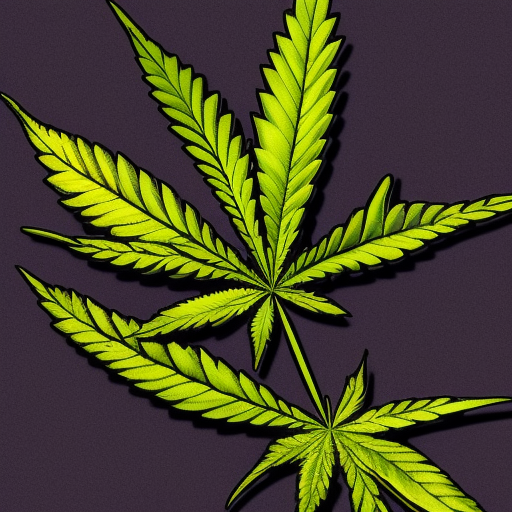
Yo, what’s good? It’s your boy Dan, and if you’ve been trying to germinate your cannabis seeds but they ain’t poppin’, then I got you covered. Keep reading to avoid these germination mistakes and get your grow off to a great start.
First off, if you’re not using cuttings, then growing weed starts with germinating your seeds. If your seeds don’t sprout for whatever reason, then your grow is over before it even has a chance to start. But if you know the reasons behind germination problems, then your chances of getting your grow off to a great start will greatly increase.
So why aren’t your cannabis seeds germinating? There are plenty of things that can prevent cannabis seeds from germinating. Here are some of the most common reasons why your seeds may not “pop”:
Bad Seeds. Got a bag of mystery seeds or bargain seeds from an unknown vendor? They may not germinate. If you want your grow to get off to a great start, it’s best to source quality cannabis seeds from a reputable seed bank like ILGM who test their seeds for germination rate and quality.
Improper Storage. Just like food, seeds are living organisms and need to be stored properly. Keep them away from light, extreme temperature changes, and humidity by storing them in a dark cupboard with stable temperatures. For long-term storage, place your seeds in a sealed container and store them in the fridge.
Handling Seeds With Bare Hands. Handing your cannabis seeds with bare hands can contaminate them with bacteria or fungus which can be harmful to seedlings, so it’s best to use clean gloves or tweezers when handling them to minimize risk of contamination.
Seeds Buried Too Shallow or Too Deep. When planting directly into soil, don’t bury your seeds too deep otherwise they won’t have access to enough oxygen and moisture can overpower them leading them to rot. Likewise, if the seeds are too close to the surface this can increase the risk of dryness before sprouting or not being able to shed off its cap so the happy medium is a depth of 0.5-1cm deep lightly covered with soil after planting.
Not Using New or Sterilized Soil and Pots. This is one of the biggest factors inhibiting seed growth due to old reused soil containing mold and other harmful organisms like bacteria and insects so only plant in sterilized (i.e new) potting mix with containers cleaned of molds or other pathogens before use as this will help keep your seeds safe from infection and disease growth in their early stages of development.
Too Much Moisture/Not Enough Moisture – The solution here is often mixing perlite into the soil which helps water drainage so that it doesn’t become too damp but also keeping soil moist (not damp). The best approach is using a hand sprayer with fine mist setting and using transparent germination hoods/cling film for keeping moisture in check when needed for sprouting purposes.
Drowning Seeds – Germinating directly in soil is usually better than germinating in glass of water as overlong exposure will result in drowning from lack of oxygen.
Allowing Seeds To Germinate For Too Long – After germination taproot length should not exceed 1-2cm as longer lengths increase risks for damage during transplanting stage, so keep an eye on development stages closely if needing reliable results.
Poor Water Quality – Tap water contains chlorine, fluoride, and salts which can be detrimental, so using bottled water is highly recommended or leave a bucket with tap water outside for 24 hours before use as this allows chlorine evaporation therefore making it safer for use when germinating cannabis plants.
Temperature Too High/Too Low – Keeping an ideal temperature range (68-77F) when growing indoors helps to avoid stunted growth from heat stress as well as cold shock damage due to colder temperatures, so make sure windows are open/fans running/air conditioning set up if necessary.
Too Much Light – Seeds don’t need light for germination but too much light can decrease the likelihood of popping, so start with low light intensity gradually increasing over time after emergence from the soil.
Pests, Birds, Insects – Hemp seeds are a major component of many types birdseed but these aren’t the only critters that love eating your precious sprouts, so keep nets up/ant traps/neem oil ready etc…to protect against any unwanted guests from coming uninvited onto your property.
Soil Too Firm/Too Loose – Compacted soil prevents access to oxygen while loose soils leave air surrounding seeds preventing proper absorption of moisture, so making sure just the right amount pressure is applied when covering seeds post-planting is a key factor here along with 10-20% perlite when needing airier substrate conditions.
Soil “Too Hot” – When the soil is “too hot” that means it contains too much nutrients which isn’t good for either seed germination or early growth stages causing nutrient burn/lock out etc…so use unfertilized/light soil mix when planting as this will provide a more gentle introduction to the environment for young plants!
Crowded Pots – After germination, roots need ample space to grow, so make sure you’re using adequately sized pots (with only one seed per pot) otherwise plants may suffer from competition for available light/nutrients, leading to poorer yields at harvest time!
Poor Air Exchange – If your ventilation setup is being kept closed too much then air exchange becomes poor, leading to lack of oxygen available not just for seedlings but also roots below ground level causing various problems such as root rot etc…so open up your spot to allow fresh air exchange into the area instead.
Poor Drainage – If drainage is poor then excess water becomes an issue, resulting in root drowning/mold growth etc…so always make sure holes are present in the bottom of containers where necessary to maximize overall drainage possibilities.
Wrong Timing For Outdoor Plantings – Many people set their outdoor plants out prematurely without waiting for local temperatures to become high enough resulting in cold shock problems (especially during spring months) so do research into ideal outdoor climates near you first before attempting outdoor growing ventures.
And that’s pretty much all there is yo, when it comes down troubleshooting weed seeding problems! Sure some may take bit more research than others but at least now you’ve got information available that should help resolve most issues encountered throughout your journey accordingly 🙂





Ayo, I feel ya on this. Gotta make sure them seeds get all the love and care they need. Keep it simple and patient, ya know? Can’t rush greatness.